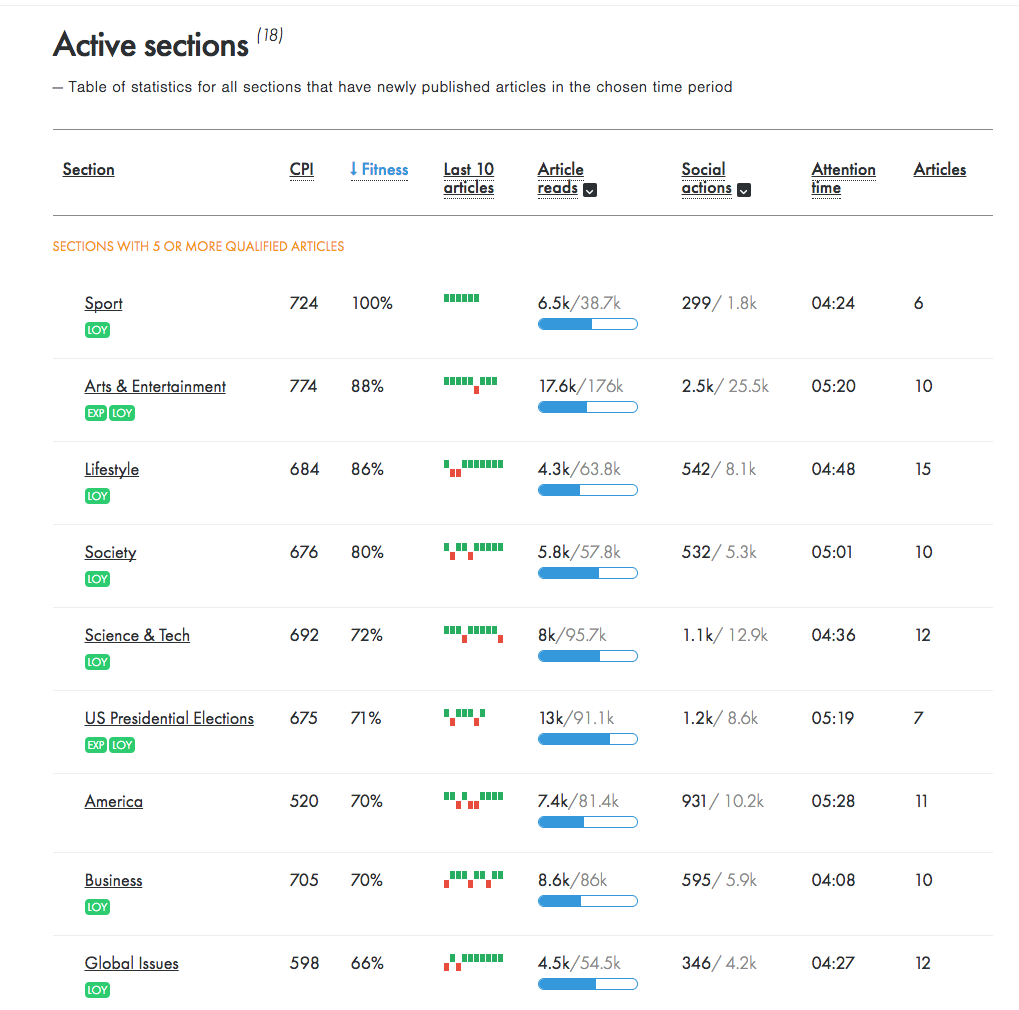This post is sponsored by Content Insights. If you’d like to see how Editorial Intelligence can transform your newsroom, email sales@contentinsights.com to set up a time or just stop by our booth (M6A) at ONA17.
 Nostalgia doesn’t make for a great business strategy, but for too long — to quote digital media consultant Adam Tinworth — “publishers have been looking for digital models that allow them to continue doing pretty much what they were doing before.”
Nostalgia doesn’t make for a great business strategy, but for too long — to quote digital media consultant Adam Tinworth — “publishers have been looking for digital models that allow them to continue doing pretty much what they were doing before.”
The reality is things are changing fast. A report out this month revealed that smartphones are now driving all growth on the web, and last year Pew reported that more than 60 percent of American adults now use social media to get news. Local news is almost universally struggling but needed more than ever, as the devastation wreaked by Hurricanes Harvey and Irma sadly demonstrates.
But there are stories of success in fusing journalism with technological innovation, such as at Denmark’s Zetland. Mic’s recent pivot to video and Medium’s very existence are both proof — if it were needed — that news is no longer synonymous with print.
It’s curious then that the level of innovation dedicated to creating and refining these new publishing methods hasn’t been matched by a similar investment across the industry in tools to monitor the content that journalists are producing.
There’s a lot more to be learned after the point at which we hit “publish,” much of which helps to sharpen editorial gut instinct. But there’s still often a wariness about bringing data and analytics into the journalistic fold.
Editorial and tech: it’s not a case of either/or, but getting the right balance
Last month the former editor of the New Republic, Franklin Foer, argued that tech has been wielding too heavy a hand over the editorial world. Many took him to task for this assertion and Chris Moran at the Guardian pointed out that when it comes to editorial and tech in journalism, it isn’t a case of either/or, but rather about how you balance the two.
Journalism professor Jussi Pullinen raised another point. Foer, he said, seemed to have a keen understanding of his readership behavior yet ended up “rejecting the tools that enable this very thing in a hybrid digital environment.”
Moving from analytics to editorial intelligence
 Content Insights data.
Content Insights data.Analytics is an evolving field, but if they are to inform editors and journalists then they must be designed to suit editors and journalists — not marketers (for whom the original single metrics were first intended) nor those with an advanced knowledge of how to deal with large and complex data sets.
Ultimately, as Content Insights’ VP for Latin America, John Reichertz, has said: “the best way to get this data culture flowing through our newsrooms is to get everybody involved.” We need to get to the point where analytics isn’t just a by-word for data presented in graphs and charts. It can and should do more than that. It must provide insight, context and meaning and do so in line with the needs of not only each news organization, but for each journalist in each department of that news organization.
When insight is relevant and specific to a publisher it becomes invaluable, and this combination of data and analysis, which we like to call “editorial intelligence,” can only sharpen editorial instinct, not undermine it. It’s redressing the very imbalance that Foer decried, and we think it’s the paradigm shift the industry needs.
Em Kuntze is a freelance writer specializing in digital media and lifestyle features. You can find her on Twitter as @moshiboshi

